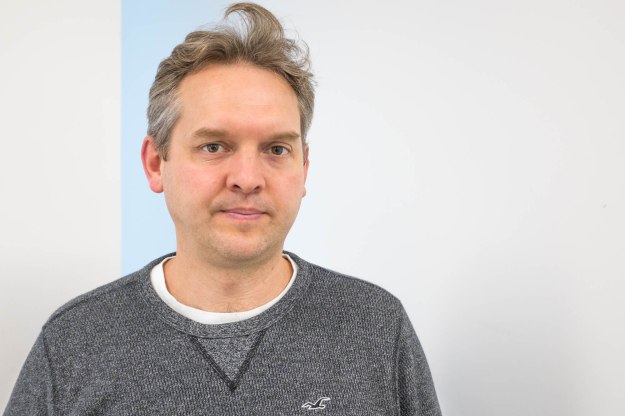Note the journeys you go on regularly and reflect upon them.
Now photograph them. Remember to aim for consistency in your pictures […] This will help keep your project honed to the subject matter rather than you, the photographer.
IaP Coursebook, p.112
1: Some everyday journeys:
From the bedroom, down to the kitchen to make tea (and while my mug is brewing on to the downstairs bathroom to empty my bladder) and then up to my study in the attic to write up posts.
From the house to school with Alice – three options: on her seat at the back of my bike (although she’s almost too big for this); on her bike; on her scooter. The route for the days when Alice has her own transport is: down to Boundary Road, up St Barnabas Road, turning left half-way up and going straight on into Thomas Gamuel Park, round the corner by the play park and the exercise gear and straight on up the back of Reina’s and into the school play ground at the top. This journey is done in the morning with the light coming from the east.
This is of course totally different from (but with the same endpoint as) the journey with Alice to school from the old house.
The journey home again in the evening, either from Reina’s (Monday and Tuesday) or the school itself (Wednesday and Thursday). There may be a stop off at the playpark if the weather is right. Evening light – from the west. Mostly, I pick up on Tuesdays and Wednesdays, when Fiona is on shift, but every four weeks, I do Thursday and Friday. On Friday Alice has a dance class in the village, so we head there instead, rather than home.
And after dropping Alice off at school, the trudge (route 1) or cycle (route2) to the station.
Saturdays to Sainsbury’s and George Monoux (pronounced Monucks, in the same way locals call the town Worfamstow) Academy for Alice’s gym class.
To Stansted. To Heathrow. Sometimes to Luton. On to Glasgow. Or Elsewhere (I did quite a bit of work on this set of journeys as background for part three of Context and Narrative)
The journey to work (cf assignment 3) or indeed assignment 5
The journey in to my workplace – through the barriers, up in the lift, go to the place I regularly hotdesk (fig. 3.3, here) plug in my laptop and then – while it’s booting – off to make coffee and to eat the samosa I bought at the station newsagents as I left the tube from this man:

When the coffee (‘real’ not instant, in a cafetiere cup) has brewed and the samosa has been eaten, I’ll go back to my desk, log on and begin my day.
From the station to home. Via the pub. Via Sainsbury’s. Via the Post Office to pick up a parcel.
If I were to pick one journey to tackle for this exercise from the list above, it would be the new journey to school with Alice. However, as mentioned above, I have already done a number of journeys in a number of treatments for various parts of my OCA courses to date, so I’ll revisit one of them and try to do something that ties in to the work on Still Life from earlier in this section of the course,
A flight into Russia
It’s not ground-breaking to take pictures of airline food; it probably was not ground breaking ten years ago. However, a large part of my time travelling by plane is taken up with eating and drinking. The last time I flew to Moscow, I flew with Aeroflot to Sheremetyevo airport to the north of the city. For my dinner, I had the meat option, not the fish; this sequence – made in a style I have used many times before – shows my progress from receiving my meal tray through eating my main to being replete. I at the chewy bar on the airport express that took me into the city.
On the way home, i probably had the lamb again (I know not to have the fish) but this time, I slipped the paper cup that my glass of wine came in into my cabin bag. Back home – and months later – i subjected it to the same treatment as I did to some of the objects on my mantelpiece.

fig.4
Removing an object from its context, interests me at the moment; I have a second airline cup – Loganair; Kirkwall to Glasgow in August 2018 – sat next to me as I type. Once I have got the workroom in my new house set up, I’ll take a matching picture of it. I will gather more detritus from journeys as time goes on and photograph them once I have returned home. This will give me another way to picture my travels and present them to others…











